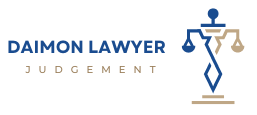Cybersecurity Threats – Protecting Your Business
Daimon
July 8, 2024

Introduction to Cybersecurity Threats
The digital revolution has brought unparalleled opportunities for businesses to thrive, but it has also introduced new vulnerabilities and risks. Cyber threats come in various forms, from phishing attacks and ransomware to sophisticated hacking attempts aimed at stealing data or disrupting operations. Understanding these threats is the first step in implementing effective cybersecurity measures.
Common Cybersecurity Threats Facing Businesses
Phishing Attacks: Cybercriminals use deceptive emails or messages to trick employees into revealing sensitive information or downloading malware.
Ransomware: Malicious software that encrypts data and demands payment for decryption, posing significant operational and financial risks.
Insider Threats: Intentional or unintentional actions by employees or contractors that compromise data security, whether through negligence or malicious intent.
Advanced Persistent Threats (APTs): Sophisticated, targeted attacks designed to infiltrate networks and remain undetected for extended periods, often with strategic objectives.
Impact of Cybersecurity Breaches
The repercussions of a cybersecurity breach extend beyond financial losses to include damage to reputation, legal liabilities, and regulatory fines. Businesses must prioritize cybersecurity readiness to mitigate these impacts and maintain trust with stakeholders.
Proactive Cybersecurity Measures
Implement Robust Authentication and Access Controls: Utilize multi-factor authentication (MFA) and least privilege access principles to limit unauthorized access to sensitive data and systems.
Regular Security Assessments and Penetration Testing: Conduct frequent assessments to identify vulnerabilities and simulate attacks through penetration testing to strengthen defenses.
Employee Training and Awareness Programs: Educate employees on cybersecurity best practices, including recognizing phishing attempts, handling sensitive information securely, and reporting suspicious activities promptly.
Data Encryption and Backup Strategies: Encrypt sensitive data both in transit and at rest, and maintain secure backups to mitigate the impact of ransomware attacks and data breaches.
Regulatory Compliance and Cybersecurity
Businesses must adhere to industry-specific regulations and data protection laws, such as GDPR or CCPA, to ensure compliance and protect customer privacy. Implementing robust cybersecurity measures not only mitigates risks but also demonstrates commitment to regulatory requirements.
Building a Cybersecurity Incident Response Plan
Developing and regularly updating a comprehensive incident response plan is crucial to minimizing the impact of cybersecurity incidents. This plan should include:
- Incident Identification and Escalation Procedures
- Containment and Eradication of Threats
- Recovery and Restoration of Systems
- Post-Incident Analysis and Continuous Improvement

Conclusion: Securing Your Business in a Digital Era
Cybersecurity is an ongoing journey rather than a one-time effort. By prioritizing cybersecurity awareness, implementing proactive measures, and staying abreast of evolving threats and technologies, businesses can effectively protect their assets, reputation, and competitive edge in today’s digital world.



